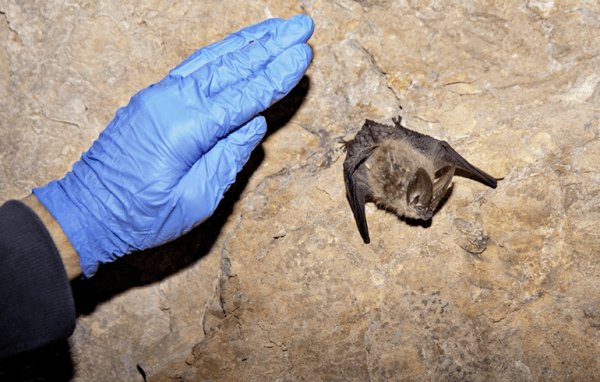A four-year study recently published in Ecology and Evolution concludes that the fungal disease, white-nose syndrome, poses a severe threat to many western North American bats.
Since it was first detected in 2006, white-nose syndrome has killed millions of bats in eastern and central North America. The spread of the fungal pathogen that causes white-nose syndrome in hibernating bats has reached several western U.S. states, mostly likely through bat-to-bat spread, and is presently threatening western species.
Bats with white-nose syndrome have fungus growing on their nose and wings, as the name implies, but the fungal infection also triggers a higher frequency of arousals from hibernation. Each arousal involves an increase in body temperature from as low as near freezing (when bats use torpor) to an active mammalian body temperature (~98˚F or 38˚C), which uses a significant amount of energy. Bats have limited fat stored for the winter, and if this is used up before the end of winter, death by starvation occurs.
Read more Wildlife Conservation Society
Image Credit: Kim Raff


